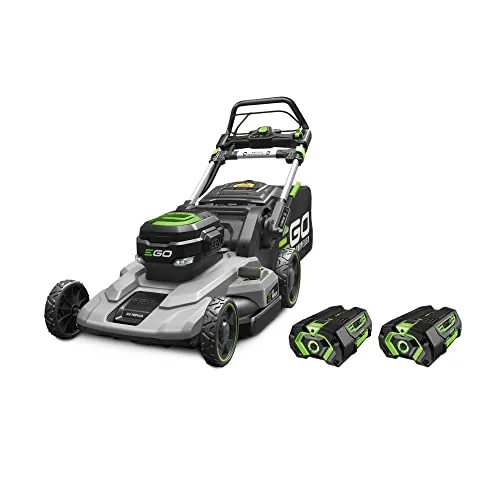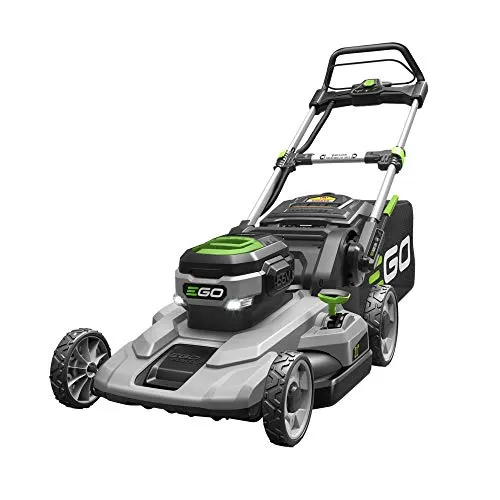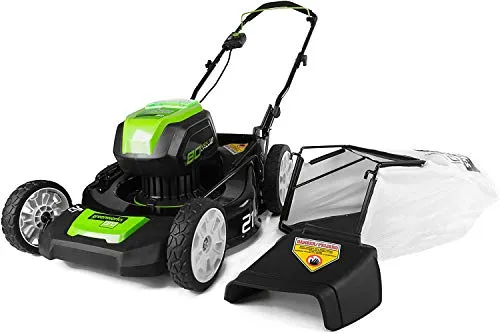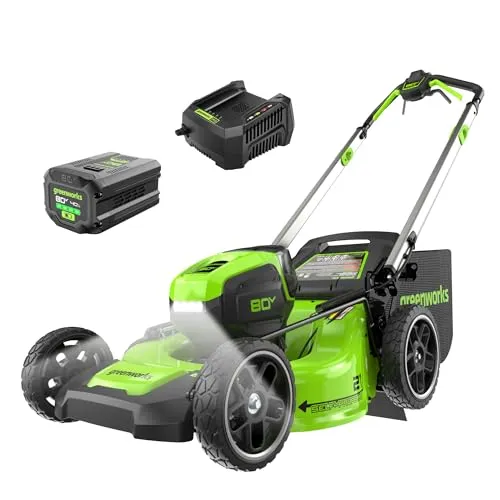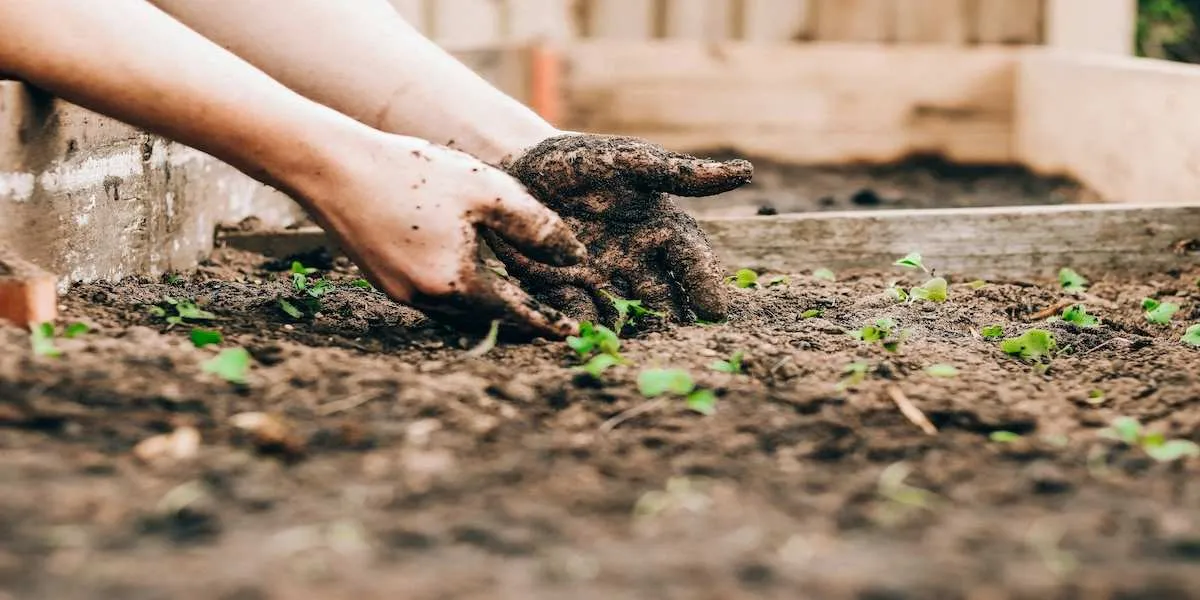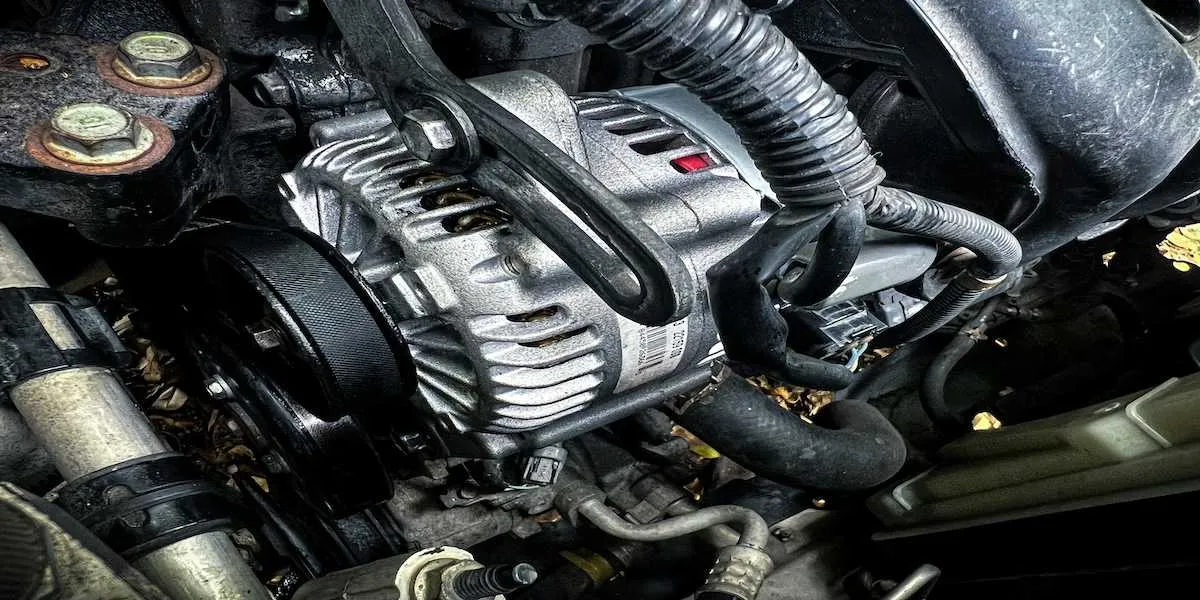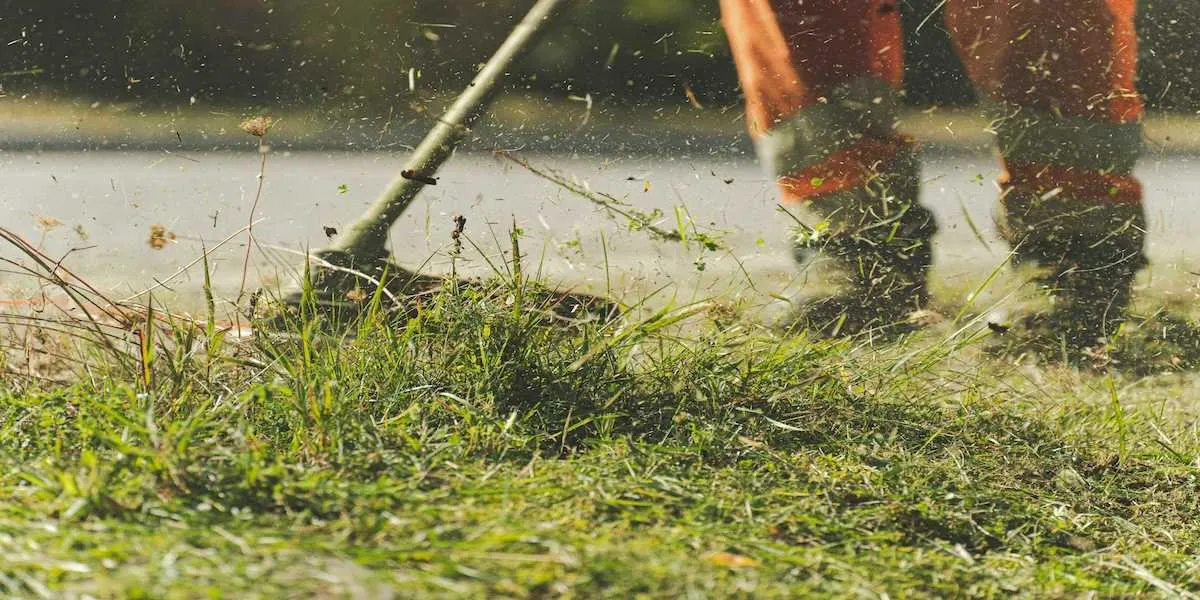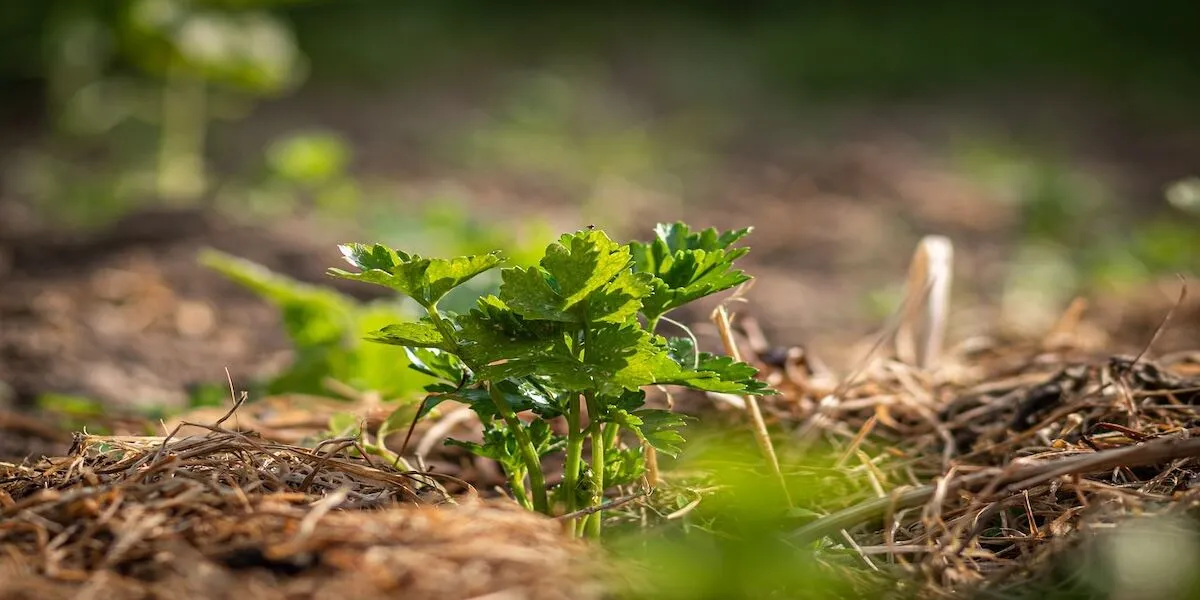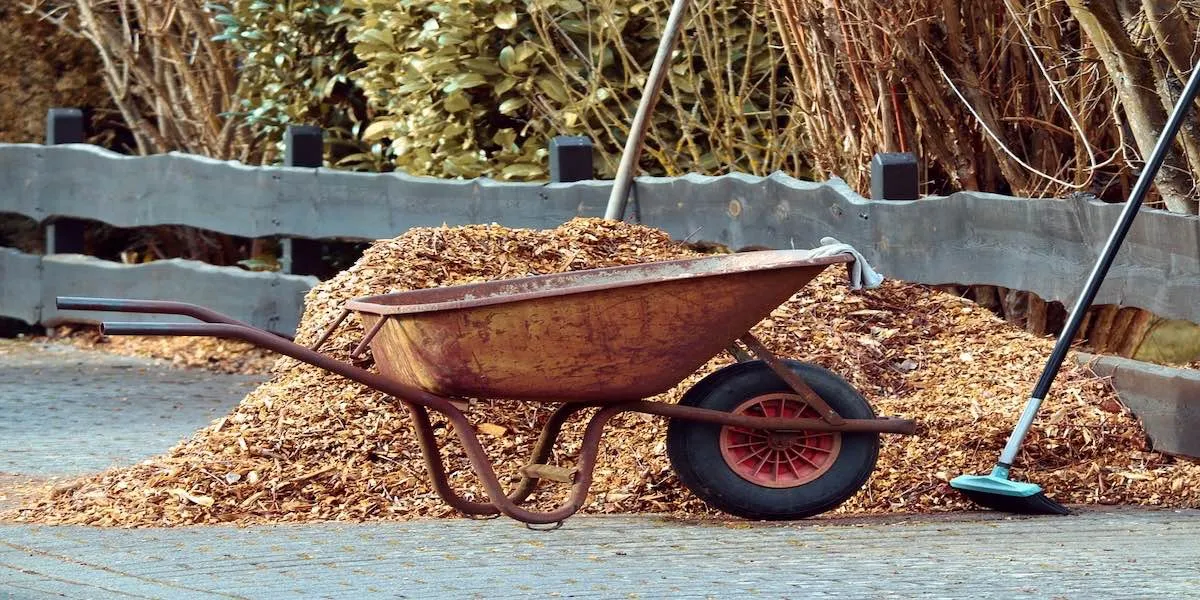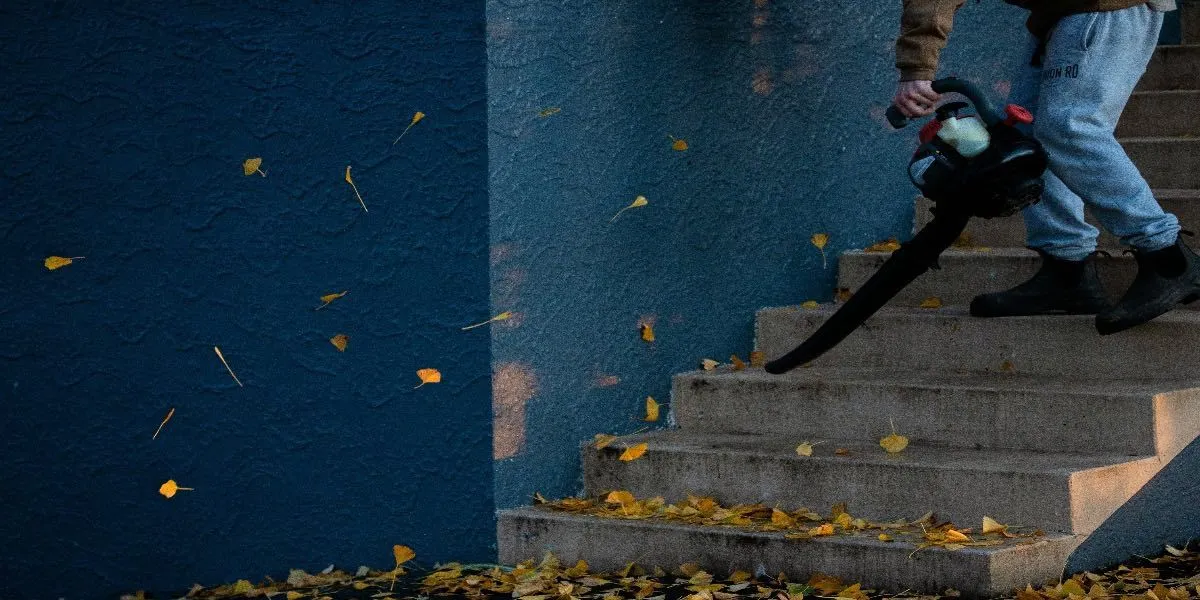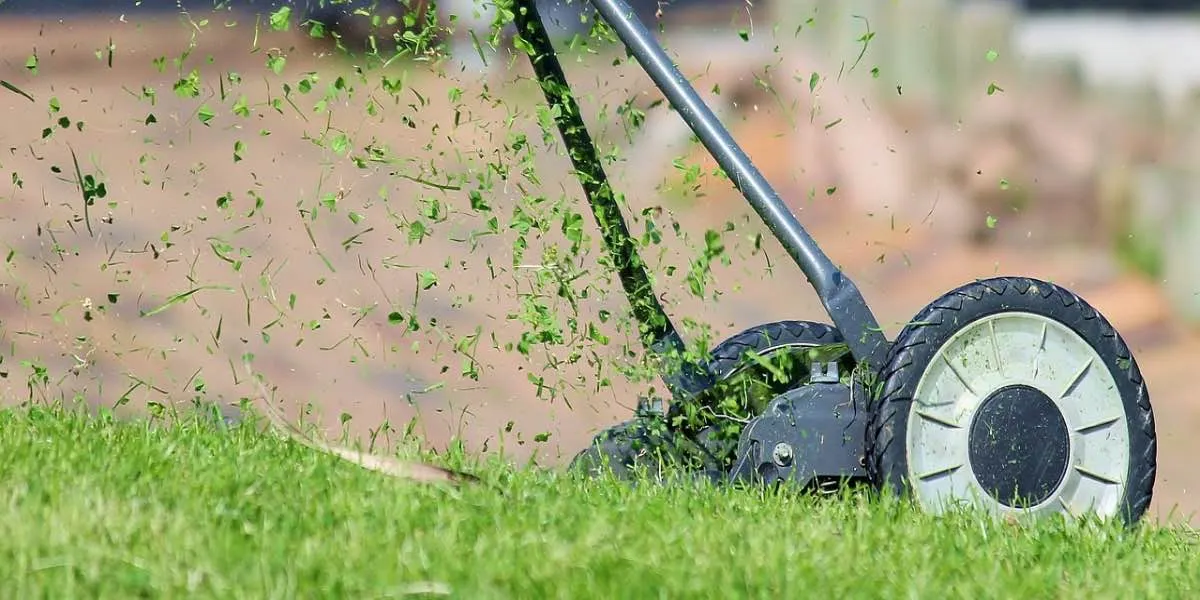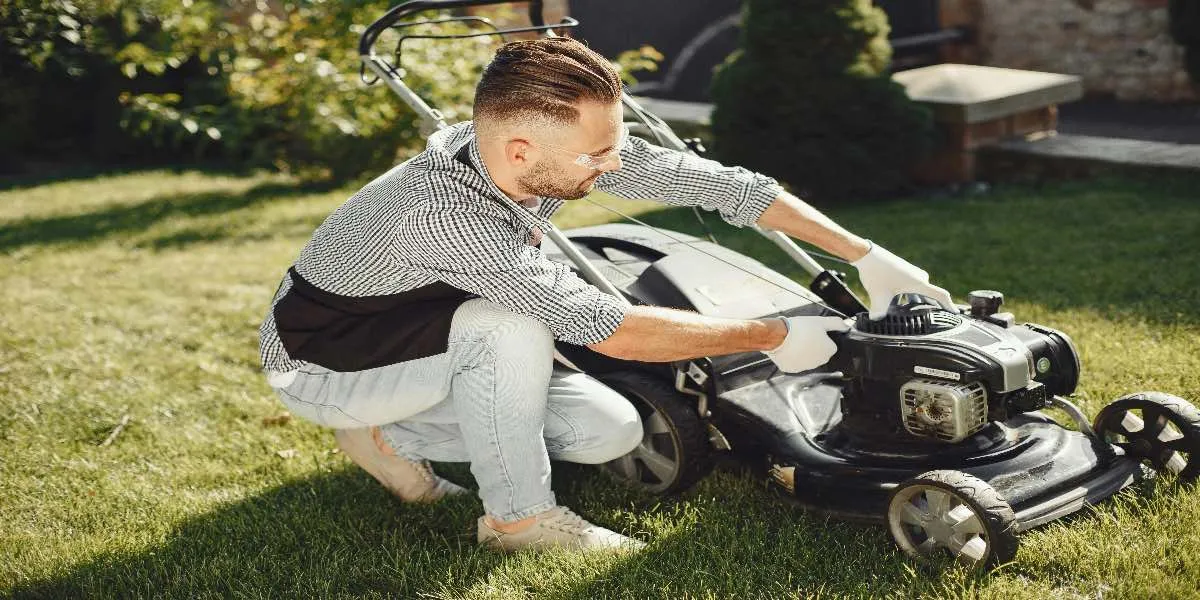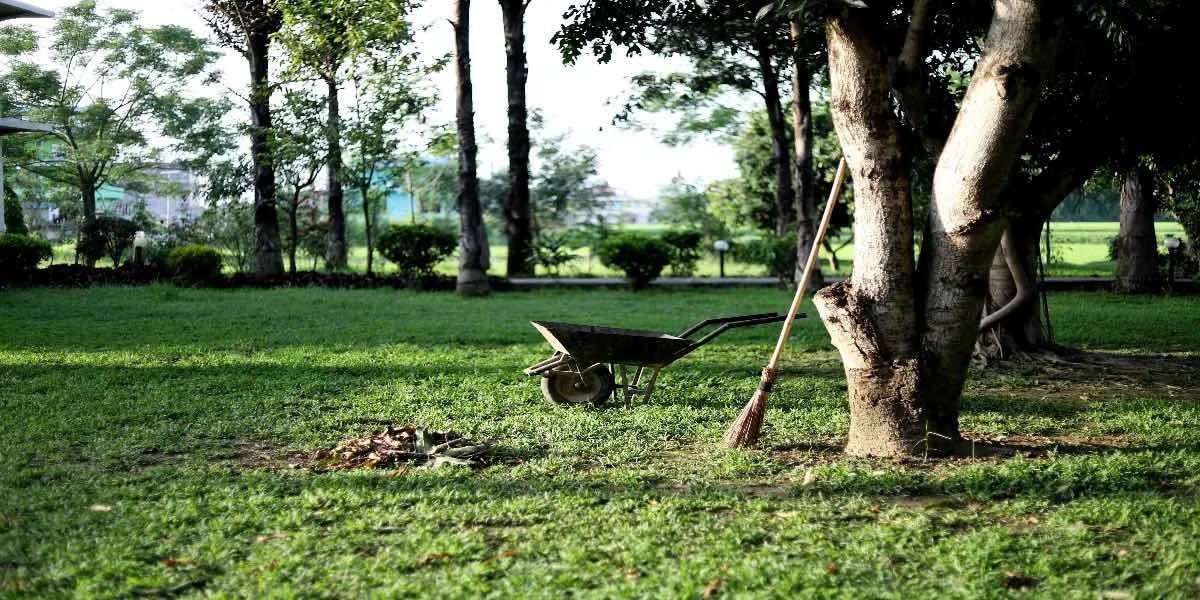Guide to the Best Garden Tools: Your Essentail List from A to Z (A-Z)

Jeffrey Tung on Apr 18, 2024
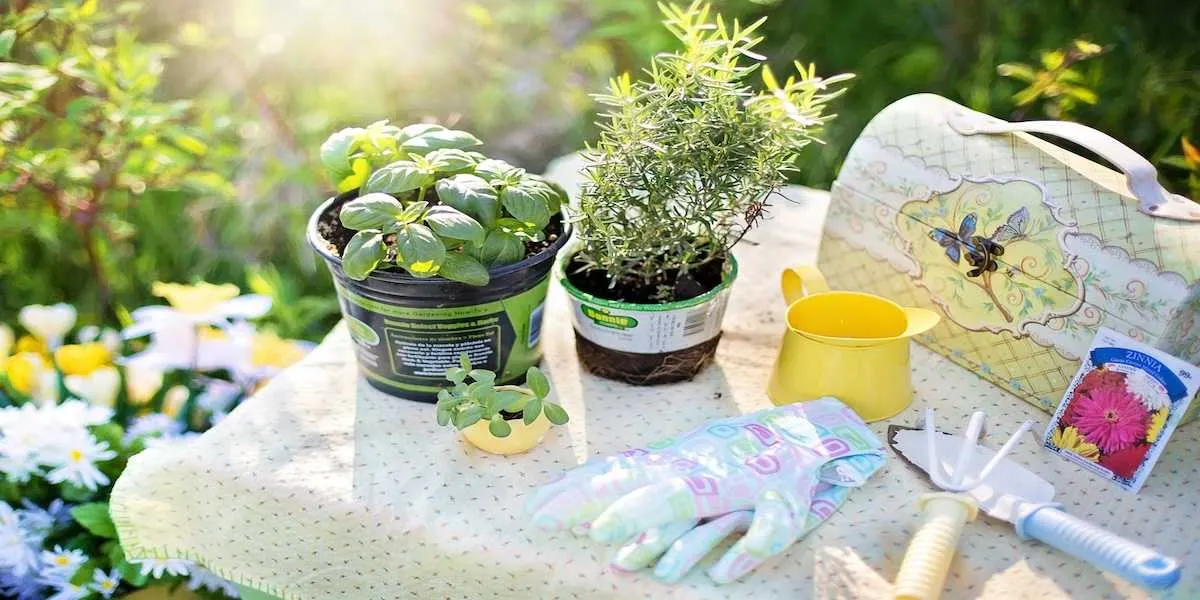
We earn affiliate commissions at no extra cost to you.
Maintaining a flourishing garden requires more than just green thumbs. It also requires having the right tools.
If you’ve just started gardening, chances are, you still need to beef up your knowledge of common garden tools. You may not know the tool name or how they are used.
So to make your gardening easy, Tools Official gives you a lowdown on the essential gardening tool list from A-Z and a sprinkle of valuable gardening advice at the end.
A for Auger
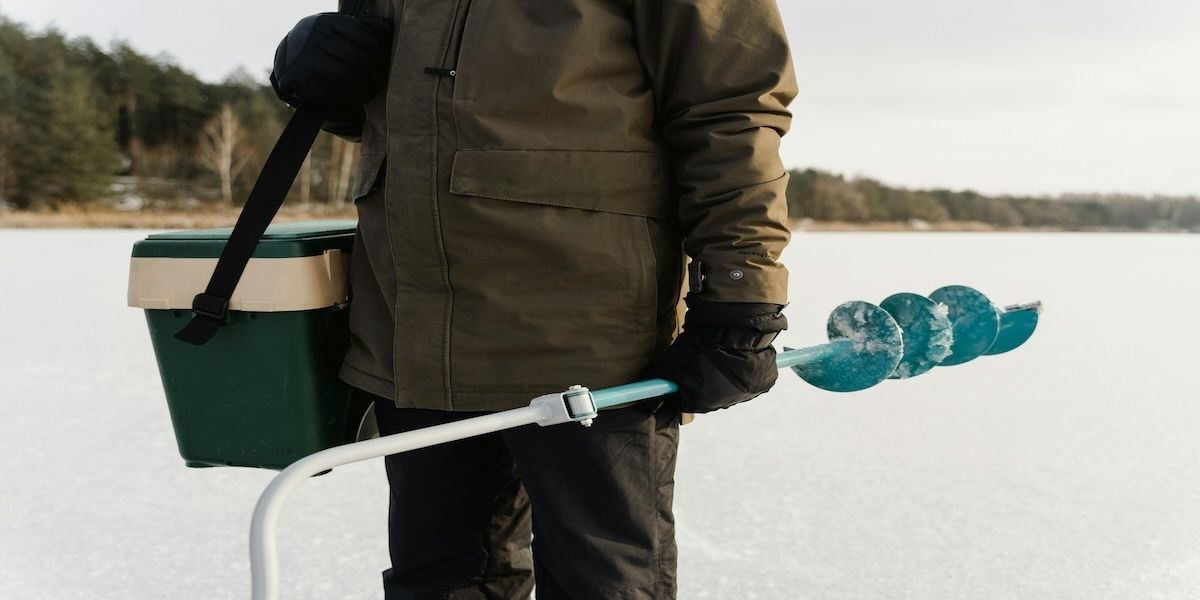 If you've ever had any trouble digging deep holes for trees or even fence posts, augers are your best friend.
If you've ever had any trouble digging deep holes for trees or even fence posts, augers are your best friend.
It's a drilling device that allows you to dig deep holes that are the perfect depth for optimal plant growth. It helps in aeration and is an essential tool for backfilling holes when putting small plants, shrubs, or trees in the ground. Compared to using a shovel or a trowel, augers are more convenient and can save you a lot of time and effort.
B for Bulb Planter
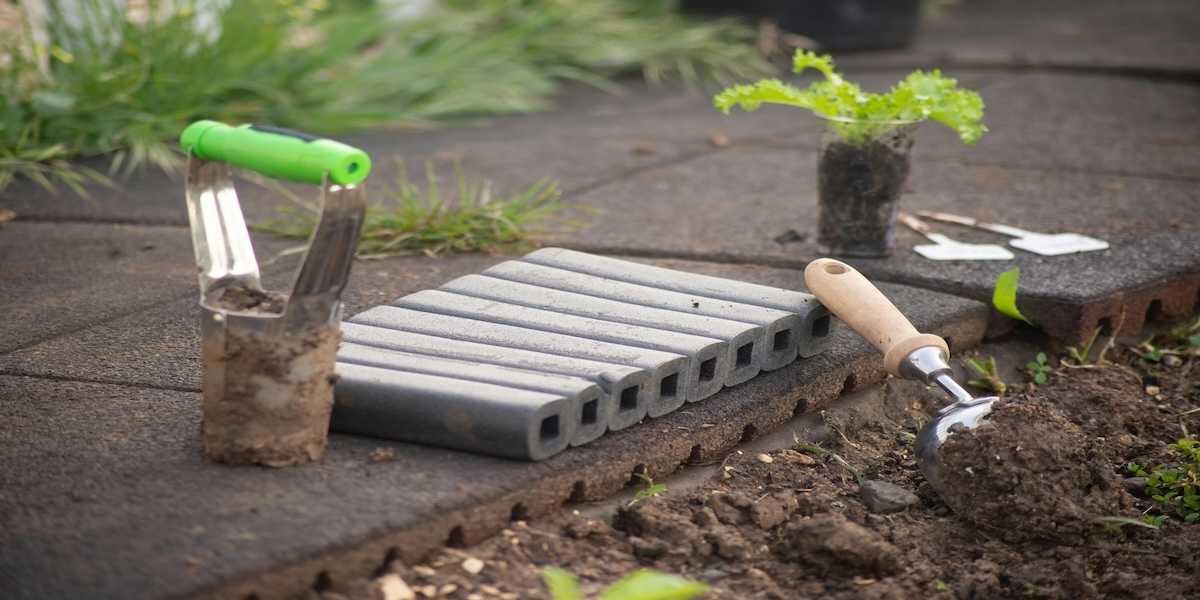
Bulb planters are designed specifically for planting bulbs at the correct depth. If you like growing crops like onions and garlic or lovely flowering plants like daffodils and hyacinths, these planters can make your gardening experience much easier.
This garden tool's cylindrical shape allows you to dig uniform holes without disturbing the surrounding soil.
C for Compost Bin
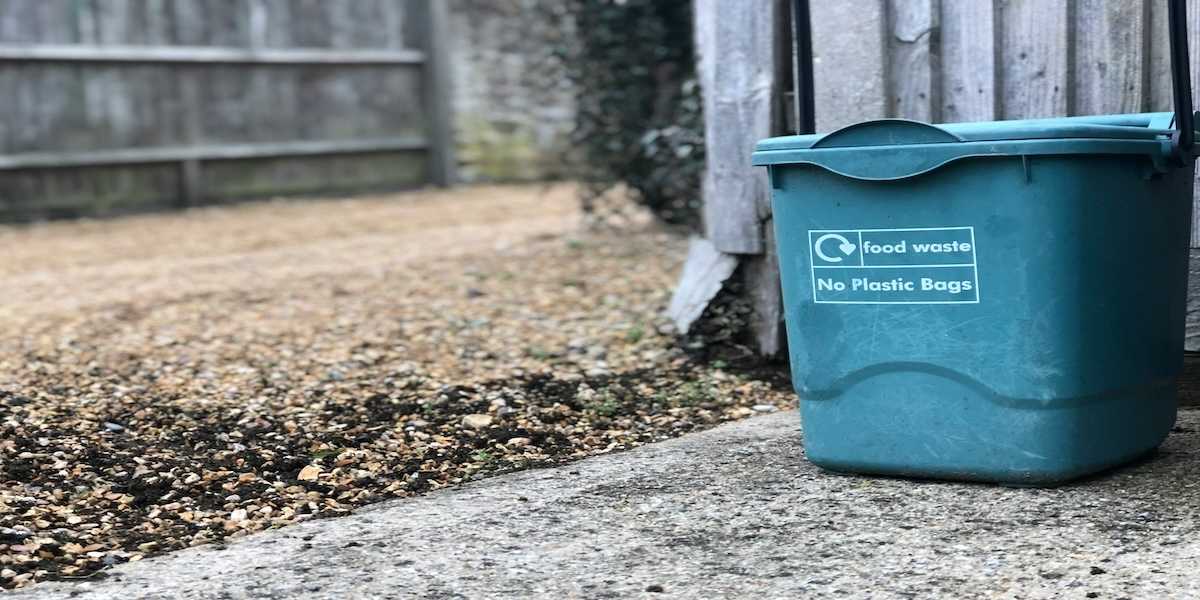 Compost is essential in bringing your garden to life. So having a dedicated compost bin in your garden can significantly improve your soil structure and fertility.
Compost is essential in bringing your garden to life. So having a dedicated compost bin in your garden can significantly improve your soil structure and fertility.
To get started, simply put dry leaves, grass clippings, egg shells, and other organic waste into your bin and allow nature to do its work. But don't forget to water and stir your mixture regularly. Once it turns dark brown, it’s ready to be mixed in your garden.
D for Daisy Grubber
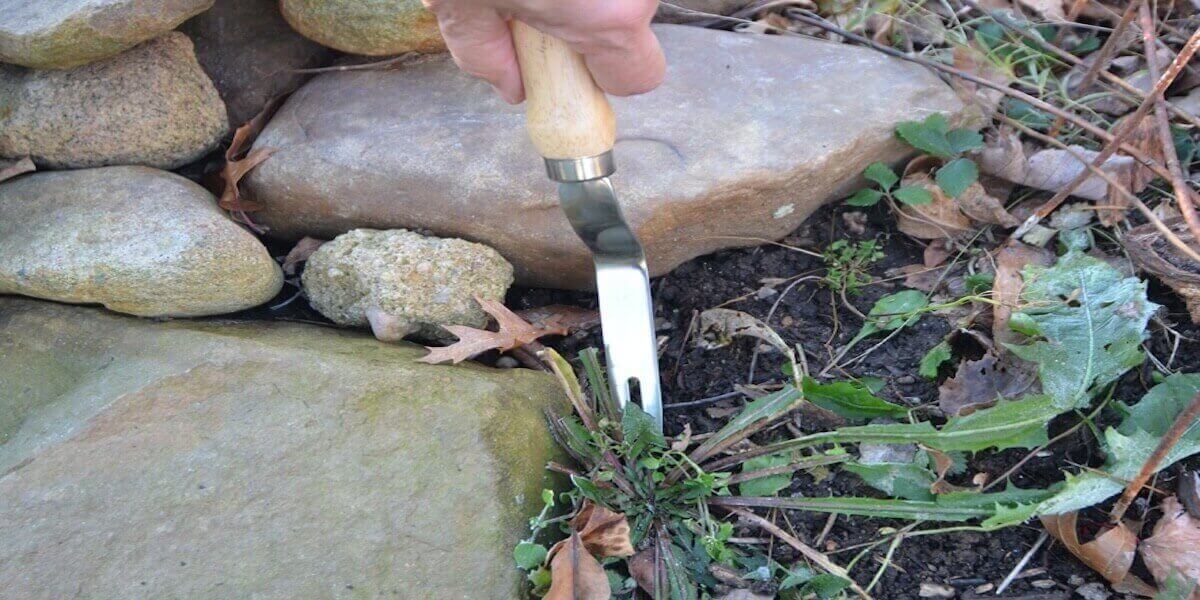 Photo Credit: Harvesting History
Photo Credit: Harvesting History
A daisy grubber is a relatively unknown garden tool that can help you efficiently remove tap-rooted weeds. It features a narrow, forked blade that helps loosen and extract weeds, including their roots, without disturbing surrounding plants. You can also use a daisy grubber to transplant your seedlings.
If your garden suffers from an infestation of weeds, the daisy grubber is a must-have in your tool inventory.
E for Edgers
The edger is the perfect tool for homeowners with lawns that need sectioning. It's great for making neat edges on plant beds, a patio, a walkway, a driveway, or a curb.
An edger has a long arm with a spherical blade at the tip. This makes it ideal for smoothening the edges of your yard to create a professional-looking finish.
F for Fork or Hand Fork
A gardening fork is a versatile gardening tool used for many different tasks, including raking out stones and weeds, harvesting root crops, incorporating fertilizers, mulching, and bringing in compost mass in your garden soil.
It's also used for separating compacted soil. Compacted soil needs to be broken down to allow aeration and improve its quality. Unlike regular forks, its tines are blunt to avoid harming the plants.
G for Gardening Gloves
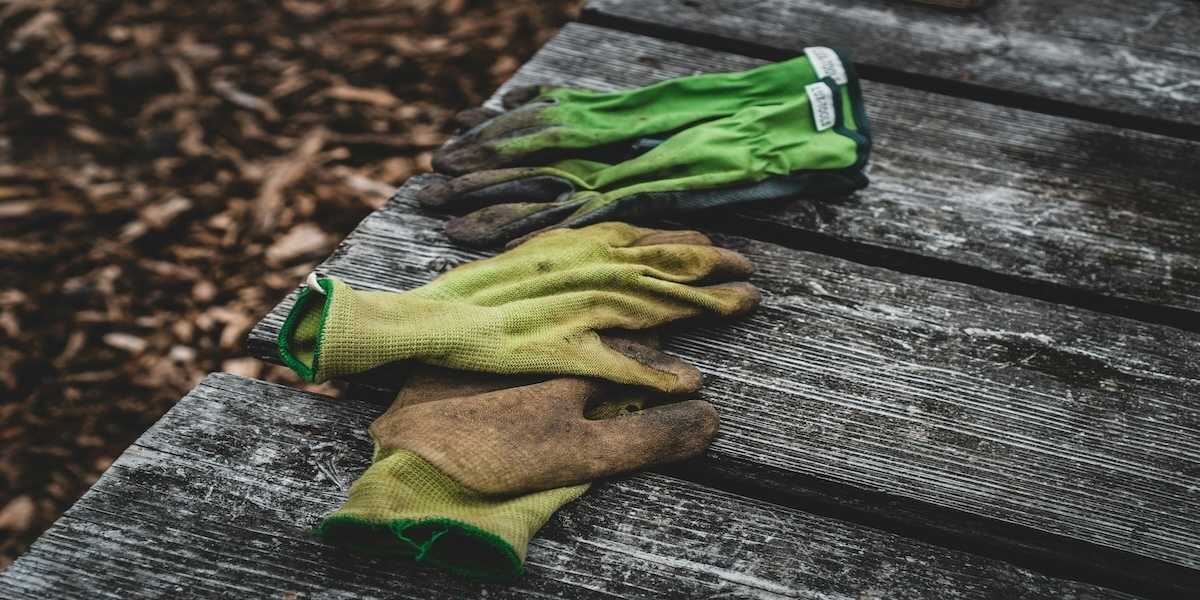 Gloves are one of the best tools around. They keep your hands clean and protect your skin from cuts, dirt, and thorns while working in the garden.
Gloves are one of the best tools around. They keep your hands clean and protect your skin from cuts, dirt, and thorns while working in the garden.
They come in a variety of materials including leather, rubber, and clothes. When buying, choose one that is sturdy, fits well, and offers good dexterity. Nitrile-coated gloves are recommended. They cover almost all gardening activities – from pruning to pulling weeds.
H for Hoe
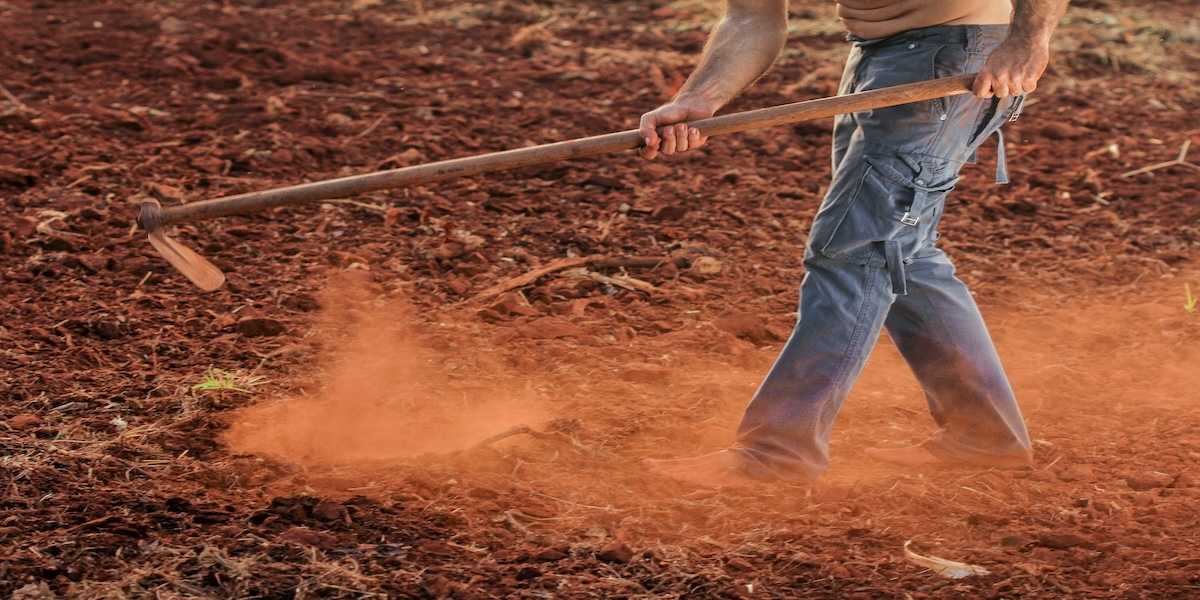 If there’s a garden tool that’s used a lot by gardeners, it’s the hoe. It's a versatile tool that can be used for as a hand cultivator or weed remover. You can also use it to create furrows for planting seeds. Because it has a long wooden handle, you can easily do these things without bending.
If there’s a garden tool that’s used a lot by gardeners, it’s the hoe. It's a versatile tool that can be used for as a hand cultivator or weed remover. You can also use it to create furrows for planting seeds. Because it has a long wooden handle, you can easily do these things without bending.
The garden hoe comes in different types, like the scuffle and the warren hoe, each designed for specific gardening tasks.
I for Irrigation Sprinkler
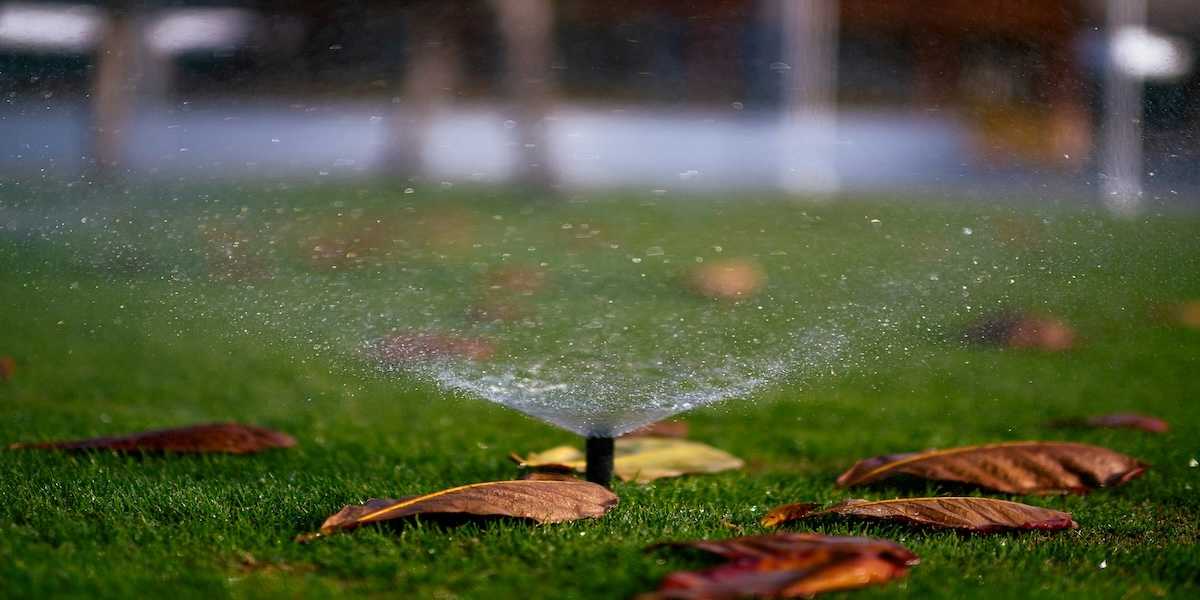 Irrigation sprinklers can be a great addition to your arsenal if you have a wide garden space and wish to distribute water evenly over a specific area with minimal water waste.
Irrigation sprinklers can be a great addition to your arsenal if you have a wide garden space and wish to distribute water evenly over a specific area with minimal water waste.
They come in various types, including oscillating, stationary, and rotating models. You can choose which one you need depending on the coverage and spray distances your garden requires.
J for Jute Twine
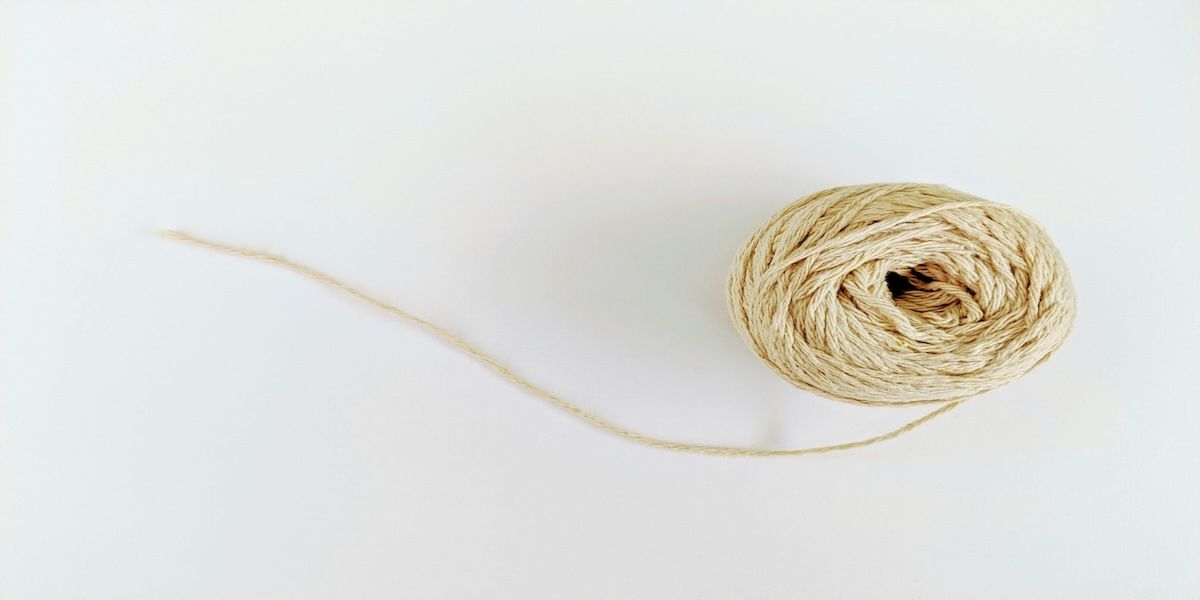 Gardeners who love growing plants such as peas, squash, cucumbers, and even tomatoes would find jute twine a great addition to their list of garden tools. Unlike nylon cables, the jute twin is made from natural fiber and is gentle on plants. Moreover, it will eventually break down minimizing its environmental impact.
Gardeners who love growing plants such as peas, squash, cucumbers, and even tomatoes would find jute twine a great addition to their list of garden tools. Unlike nylon cables, the jute twin is made from natural fiber and is gentle on plants. Moreover, it will eventually break down minimizing its environmental impact.
Jute twine is ideal for making garden trellises, securing garden netting, bundling together pruned branches, and more.
K for Kneeler
Kneelers or kneeling pads are a must-have for gardeners who frequently have to tend their garden beds on their knees or all fours. It provides a soft cushioning which reduces the strain and discomfort when kneeling or bending for extended periods.
There are different types of kneelers, so it's best to test a few out before making a purchase. There are a few products that double as a compartment and can fit different types of garden tools.
L for Loppers
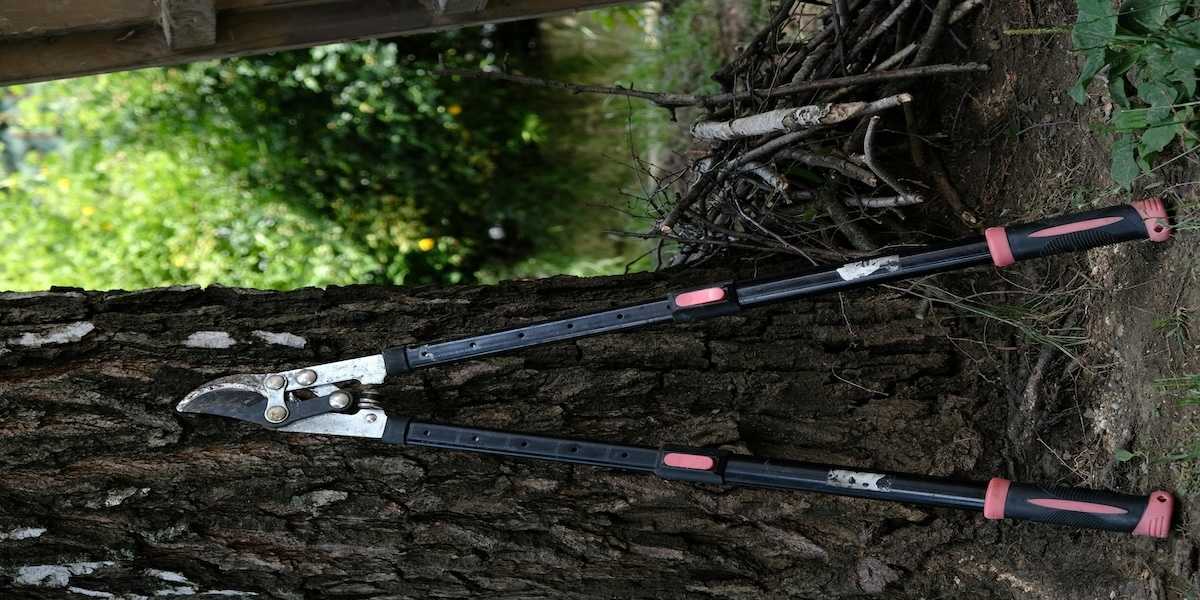 Loppers are ideal for pruning thick branches or removing dead or damaged wood. They are essential for gardens with lots of trees, shrubs, and woody perennials.
Loppers are ideal for pruning thick branches or removing dead or damaged wood. They are essential for gardens with lots of trees, shrubs, and woody perennials.
If you're looking to buy one, go for ones with bypass cutting blades for maximum power. Loppers with extendable handles are also a good choice. This allows you to increase your reach for hard-to-reach branches and hedges.
M for Mower
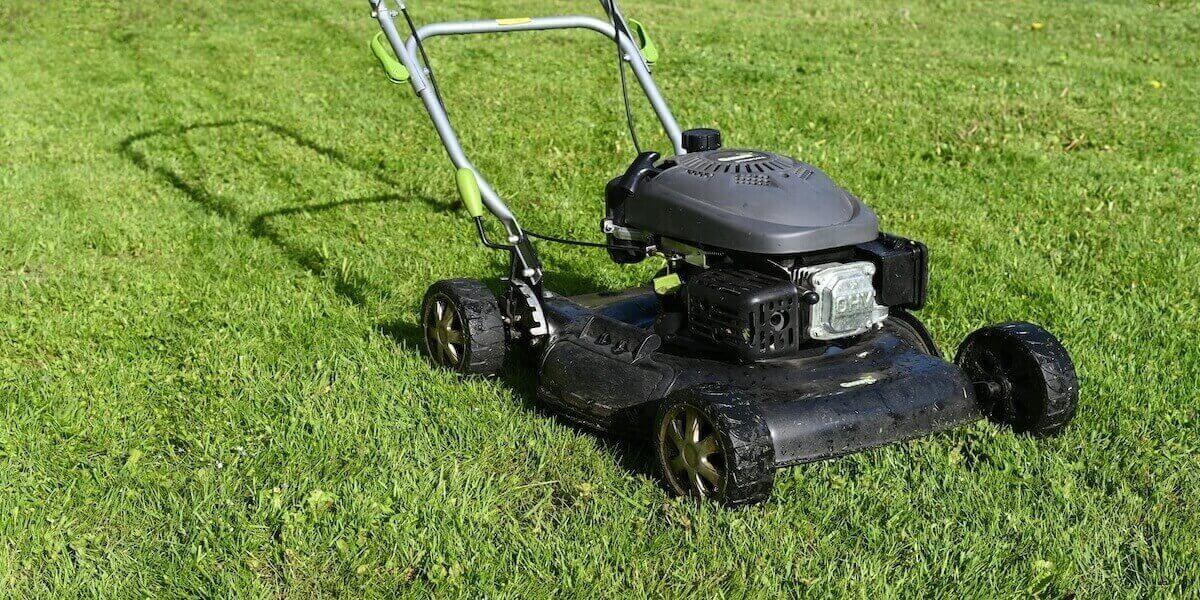 Lawnmowers are a definite must-have for homeowners with large expanses of grass lawns. Well, that is unless you're planning to hire a lawn service.
Lawnmowers are a definite must-have for homeowners with large expanses of grass lawns. Well, that is unless you're planning to hire a lawn service.
If you're not, mowers can significantly reduce the time you need to maintain a well-manicured lawn.
Most homeowners prefer to use cordless types or battery-operated lawnmowers today. Having a cordless feature enables them to move freely and mow hard-to-reach areas in their yard without the hassle of getting entangled or having cord-related accidents.
Homeowners with small yards generally pick between a reel mower or a rotary mower. Reel mowers cut grass like scissors while rotary mowers use fast-spinning blades to trim grass.
For homeowners with larger lawns, riding mowers are the best choice.
N for Nozzle
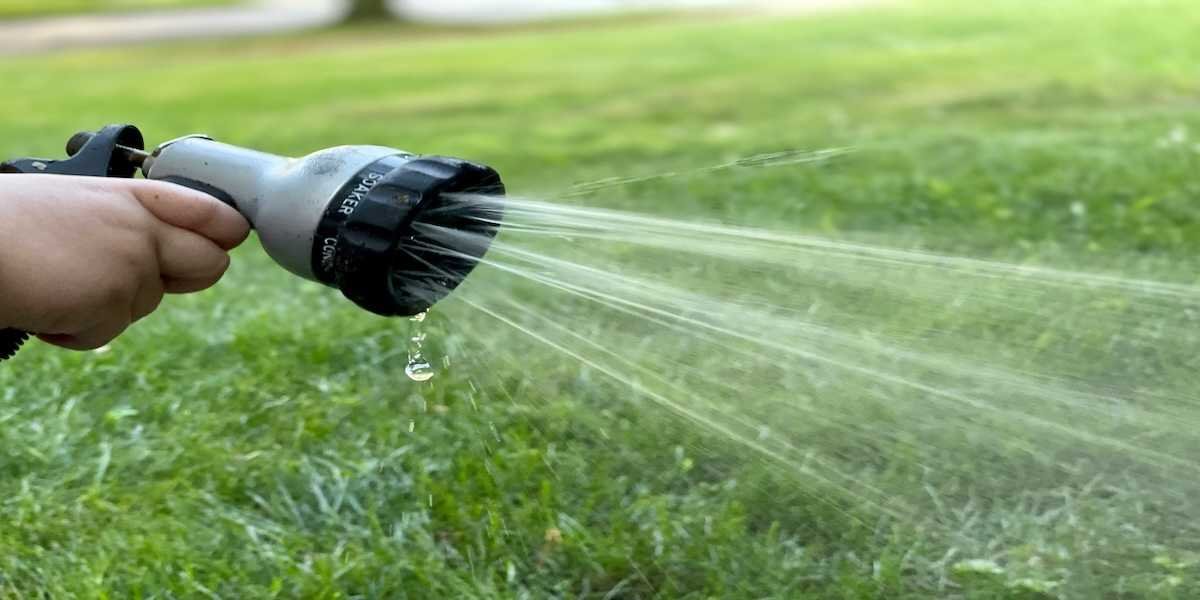 A hose nozzle is an attachment that controls the flow and direction of water in your garden hose. If you often find yourself watering your garden plants with a hose, having the right nozzle can add so much versatility to your tasks.
A hose nozzle is an attachment that controls the flow and direction of water in your garden hose. If you often find yourself watering your garden plants with a hose, having the right nozzle can add so much versatility to your tasks.
Some nozzles feature multiple spray patterns such as, cone, shower, flat, and jet, making it easier to water specific areas of your garden.
O for Outdoor Push Broom
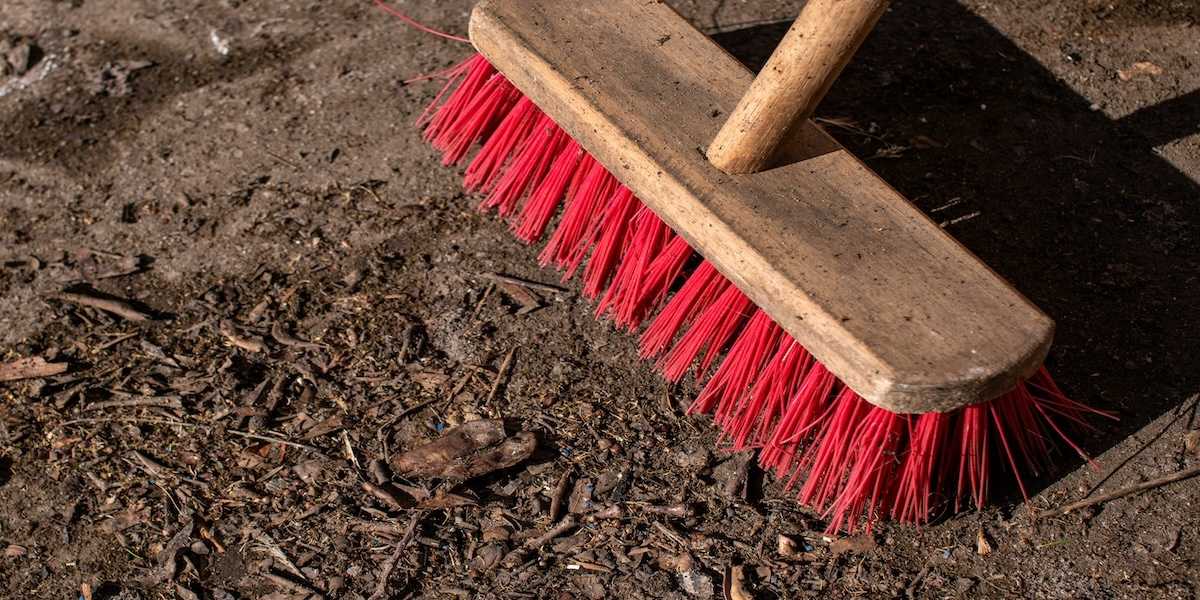 Outdoor push brooms are wide-bristled brooms designed to sweep debris and dirt from outdoor surfaces such as patios, pathways, and driveways. They're great for gardens with walkways.
Outdoor push brooms are wide-bristled brooms designed to sweep debris and dirt from outdoor surfaces such as patios, pathways, and driveways. They're great for gardens with walkways.
You can use them to sweep leaves, grass clippings, and other debris that can accumulate in and around your garden.
P for Pruners
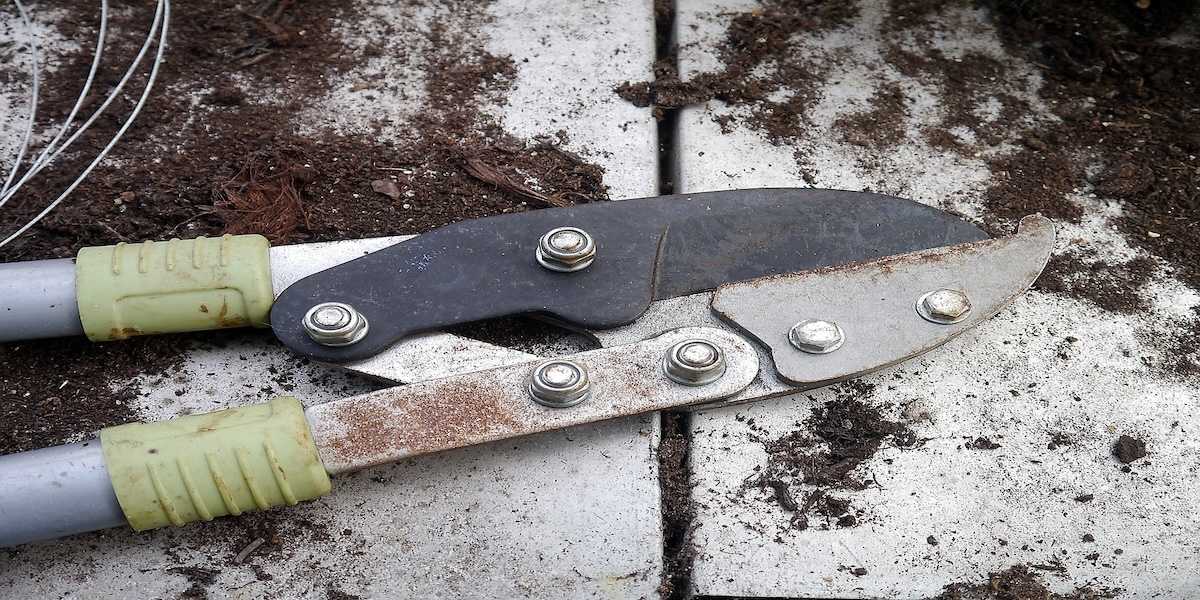 Pruners are like scissors but they’re intended to cut thicker stems. Unlike the lopper, it's designed to be a hand tool and doesn't have a long handle. This is an ideal tool for propagating plants via cuttings. You can also use your hand pruners to de-head dead flowers and remove diseased wood to promote healthy growth.
Pruners are like scissors but they’re intended to cut thicker stems. Unlike the lopper, it's designed to be a hand tool and doesn't have a long handle. This is an ideal tool for propagating plants via cuttings. You can also use your hand pruners to de-head dead flowers and remove diseased wood to promote healthy growth.
Sharpen your pruning tools regularly to keep them in good working condition.
Q for Quick Hooks
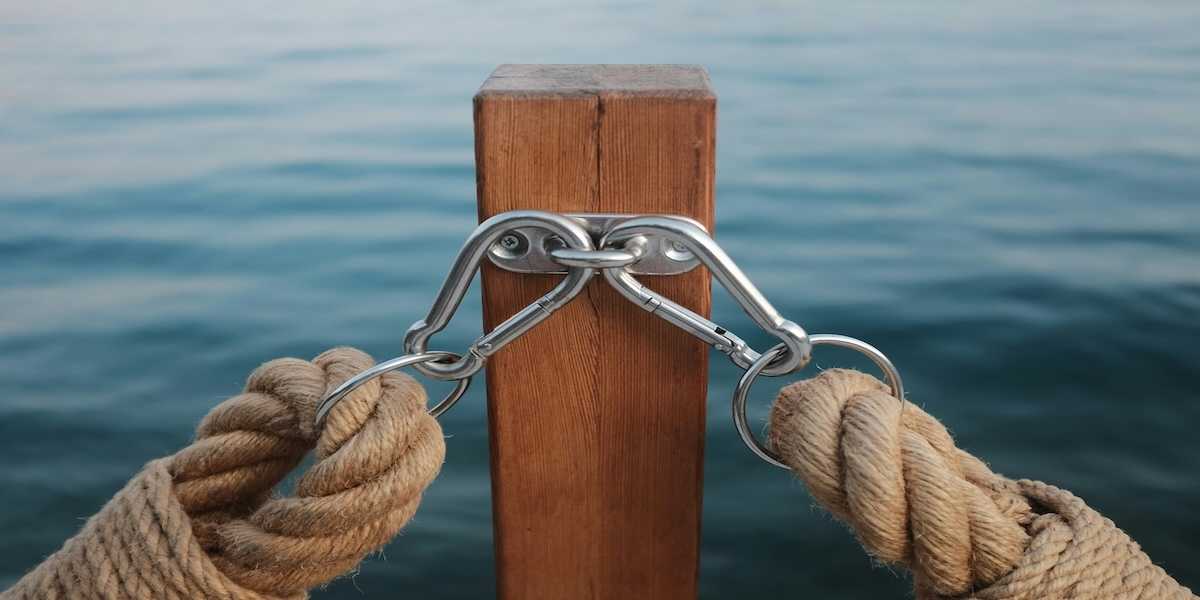 Quick hooks or S-hooks are not your typical tools for the garden. But they can be very useful for keeping your garden shed organized. You can use them to hang your frequently used tools such as trowels, pruners, and hoses.
Quick hooks or S-hooks are not your typical tools for the garden. But they can be very useful for keeping your garden shed organized. You can use them to hang your frequently used tools such as trowels, pruners, and hoses.
You can also use quick hooks to create a trellis for your climbing plants or to hang plants in your vertical garden.
R for Rake or Leaf Rake
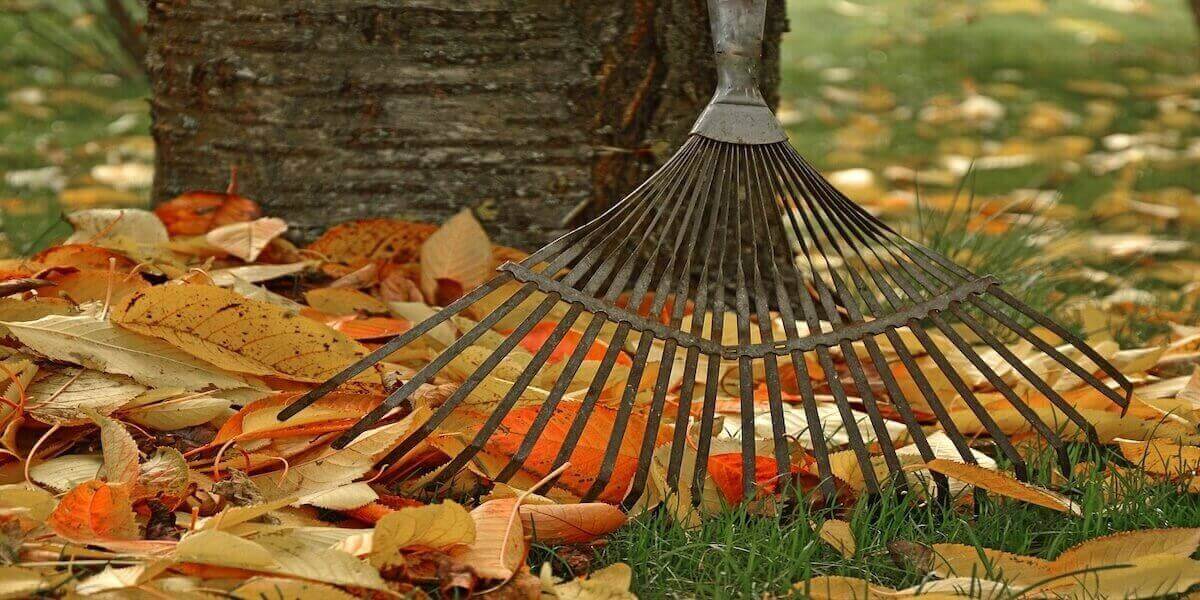 Rakes are one of the best tools around, especially for yard owners who have tall trees around.
Rakes are one of the best tools around, especially for yard owners who have tall trees around.
Small rakes with short handles work best for raking leaves from shrubs, while big ones with long arms do great during winter clean-ups. Small hand rakes are also perfect for extracting leaves on plant beds while keeping the plants intact and undisturbed.
Garden rakes with broad heads and flexible spikes are good for cleaning large sections of the yard. Bow rakes are ideal for preparing soil for vegetable planting, raised beds, and gravel covers.
S for Shovels
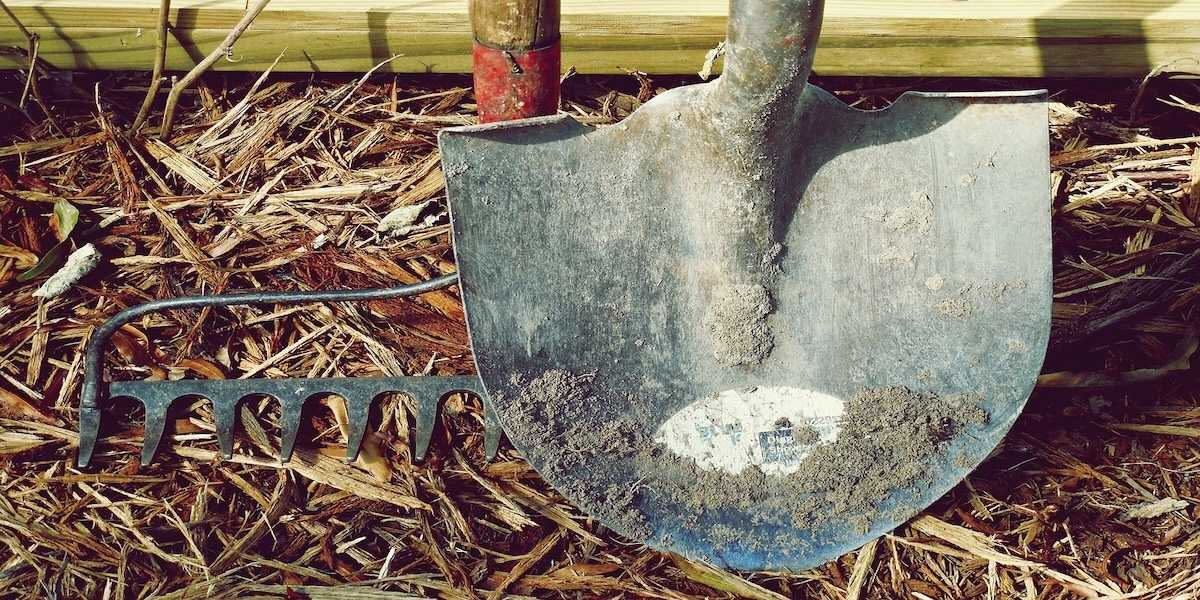 If you're a gardener and don't have a shovel yet, you better head to the store and buy one. These are handy little tools that offer so much versatility. They are used for digging, lifting, and moving garden soil, mulch, or gravel. They can also be a cutting tool.
If you're a gardener and don't have a shovel yet, you better head to the store and buy one. These are handy little tools that offer so much versatility. They are used for digging, lifting, and moving garden soil, mulch, or gravel. They can also be a cutting tool.
They come in various styles and sizes. Square shovels are great for cutting through soil and sod, round-point shovels for digging and scooping, and spade shovels for edging and trenching.
T for Trowels or Hand Trowel
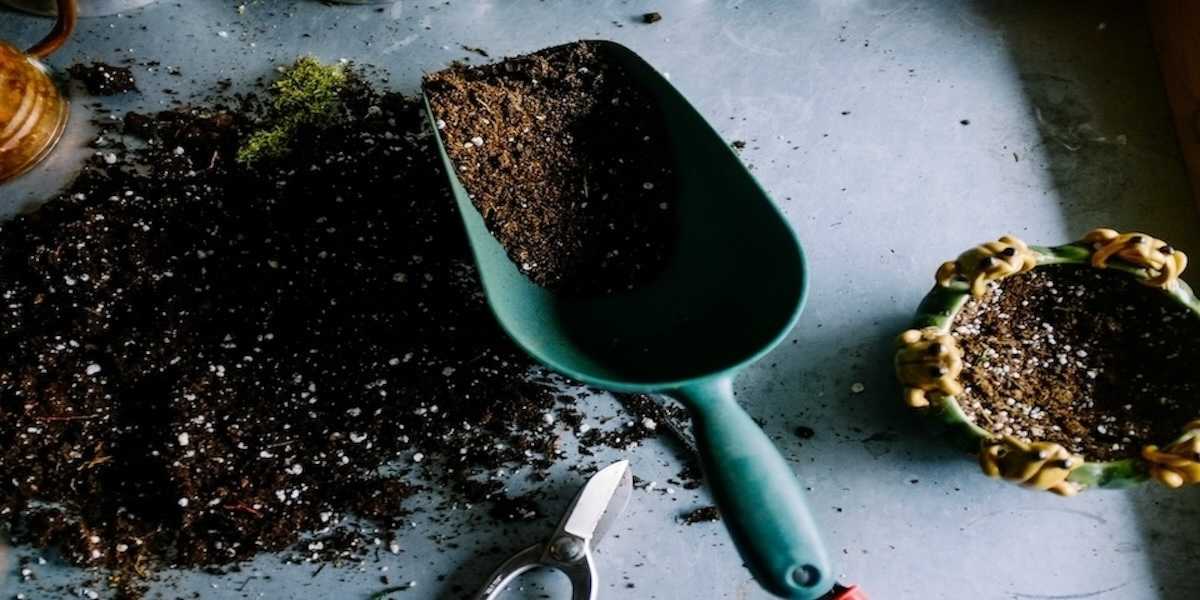 A hand trowel does wonders for digging soil, tucking seeds, or smoothing cement in your yard. They're essential if you're working in confined spaces, where larger digging tools like shovels may be impractical.
A hand trowel does wonders for digging soil, tucking seeds, or smoothing cement in your yard. They're essential if you're working in confined spaces, where larger digging tools like shovels may be impractical.
When choosing one, pick one with an ergonomic design that reduces hand and wrist fatigue, such as a seamless handle-blade. You should also consider trowels with serrated edges to make digging and cutting easier.
U for Utility Belt
A utility belt isn't only reserved for the mechanics and handymen. They're also for gardeners. With multiple pockets, loops, and compartments, you can easily organize your garden tools and keep them within reach whenever you need them.
You won't need to get up from your perch and look for whatever tool you need. Simply reach into your utility belt and viola! It's now in your hands.
V for Vacuum Sealer
I know it sounds weird to see a vacuum sealer in your list of gardening tool names but they are very useful for preserving the freshness and flavor of your garden harvest. You can also use them to keep your seeds viable for a long time.
By removing the air from sealed bags or containers, vacuum sealers extend the shelf life of fruits, vegetables, and other garden produce.
W for Wheel Barrow
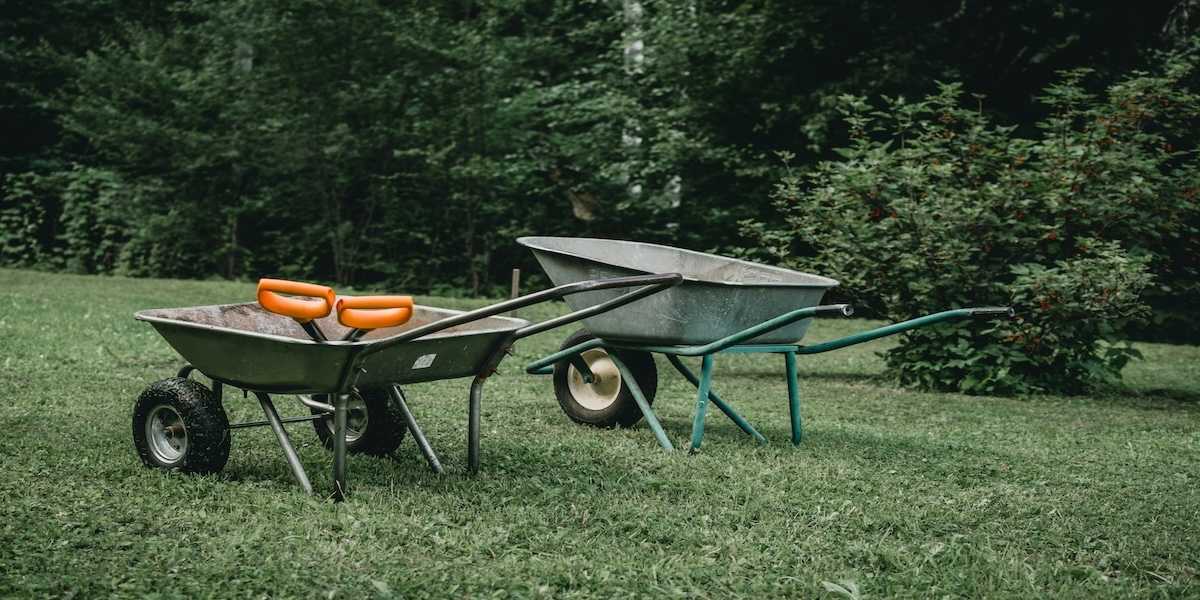 Whether you have a mound of soil, garden waste, or a bountiful harvest, you’ll need a wheelbarrow to transfer them from one point to another.
Whether you have a mound of soil, garden waste, or a bountiful harvest, you’ll need a wheelbarrow to transfer them from one point to another.
When shopping for a wheelbarrow, pick one with a modern, heavy-duty, two-wheel design with curved edges. This is easier and safer to use, especially for homeowners with children.
You may also want to buy buckets and bags when you go out to buy a wheelbarrow. Purchasing them in one go will allow you to lift or transfer more things while you garden.
X for X-Acto Knife
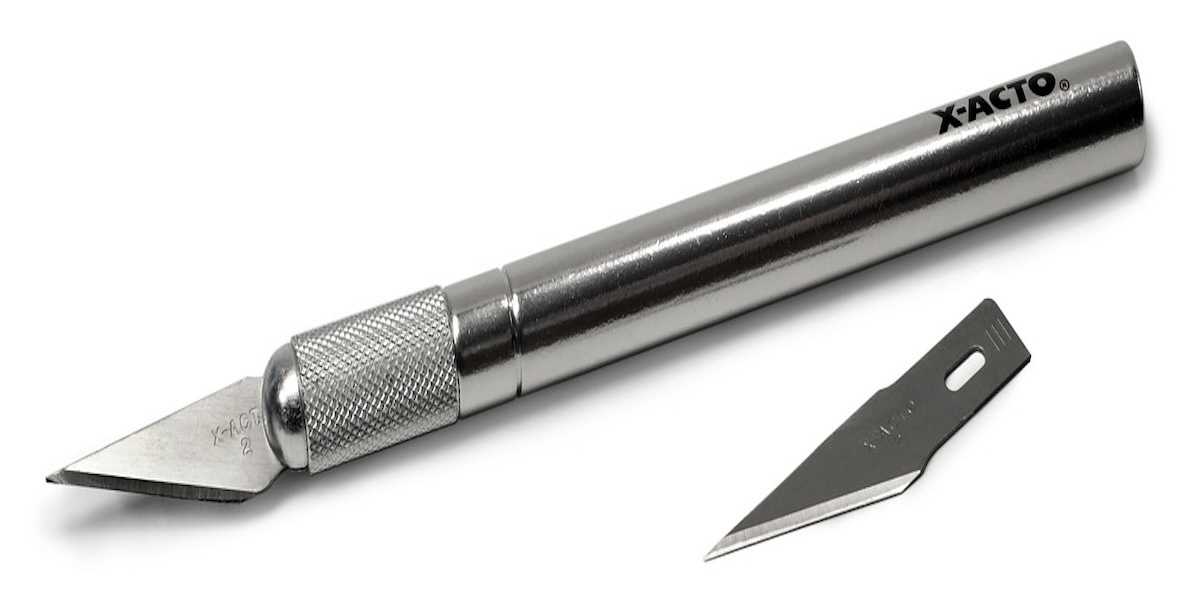 While not a traditional tool used in gardening, an X-Acto Knife is handy for precise cutting, such as performing delicate grafting and propagation.
While not a traditional tool used in gardening, an X-Acto Knife is handy for precise cutting, such as performing delicate grafting and propagation.
If you don't have garden scissors on hand, you can use your X-Acto Knife to cut twine or even open seed packets. Having a sharp, precise knife is handy for garden work that needs precision and control.
We're almost at the end of our garden tool list.
So for the last two letters, let us give you some nifty advice to make your gardening experience better.
Y for Year-Round Planning
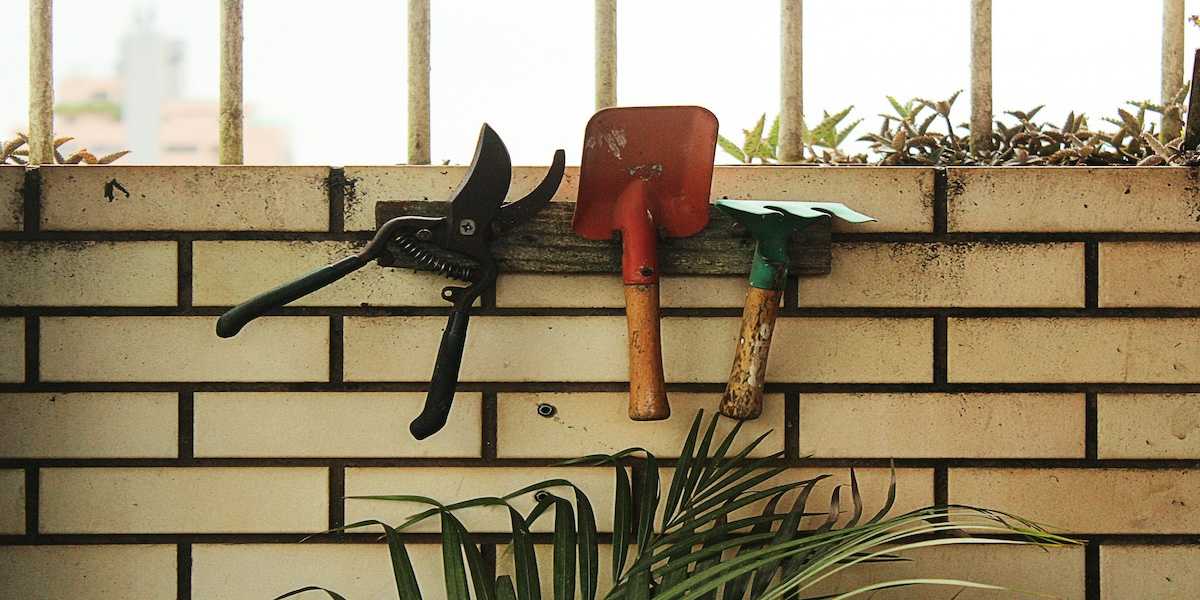 One of the keys to successful gardening is year-round planning. While it's very much tempting to focus on only the active growing seasons, taking a proactive approach throughout the whole year can lead to a more productive and beautiful garden.
One of the keys to successful gardening is year-round planning. While it's very much tempting to focus on only the active growing seasons, taking a proactive approach throughout the whole year can lead to a more productive and beautiful garden.
Use the quieter winter months to assess what worked and what didn't and plan for the year ahead. By doing so, you'll be better prepared to tackle challenges that may arise and maximize the potential of your garden space.
Z for Zest for Experimentation
Having a zest for experimentation in your garden and even in life can lead you to some unexpected but definitely welcome outcomes. Don't get trapped in the comfort of familiarity and try to experiment with different things as you grow your garden and learn more about plants, soil, and the ecosystem you create.
Consider experimenting with different plant combinations, garden layouts, or growing methods. This way, you can discover what works best in your unique garden environment and evolve as a gardener.
Well, that's all for the best gardening tools list from A to Z. We hope you learned something new.
Happy gardening!

